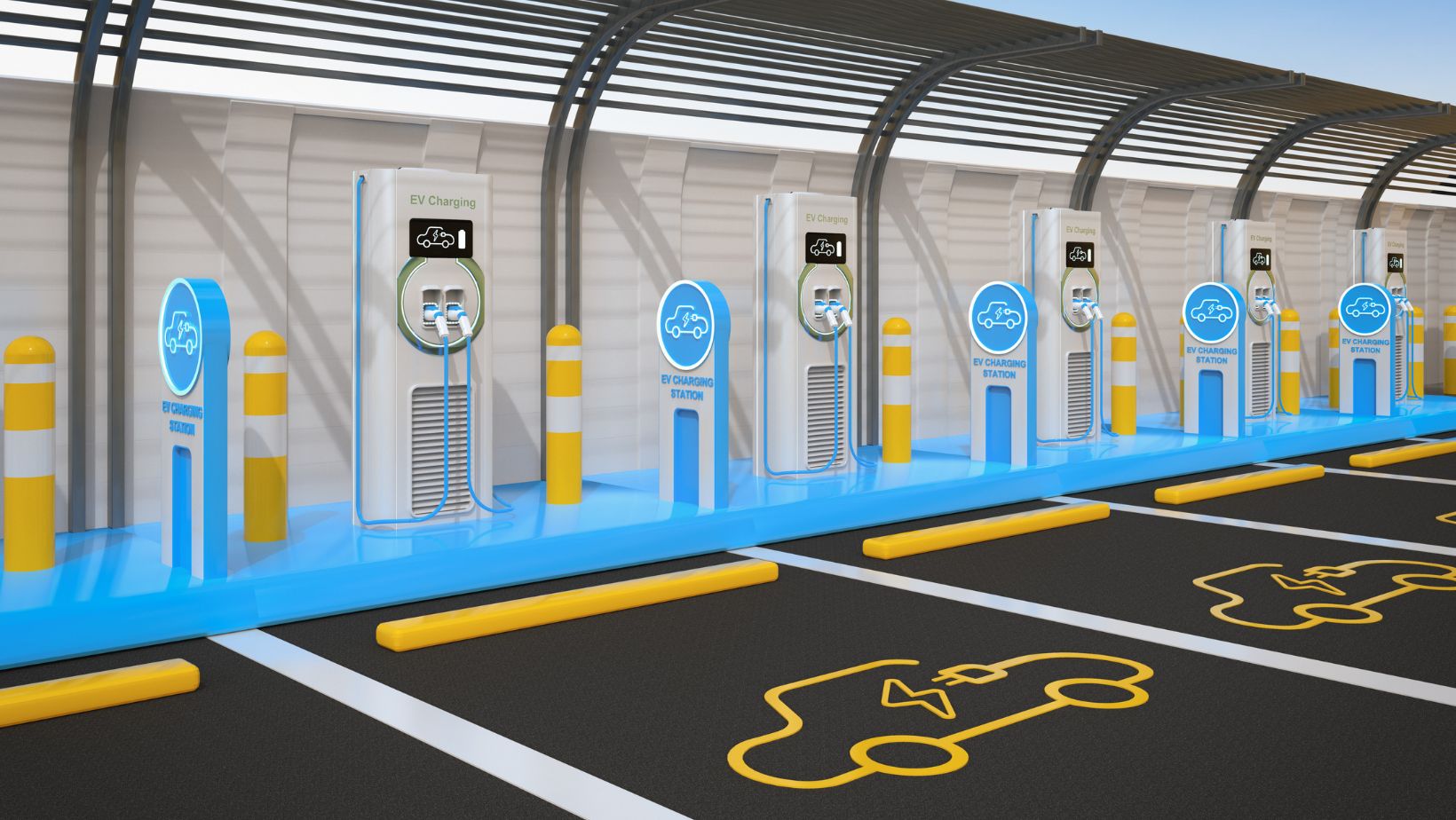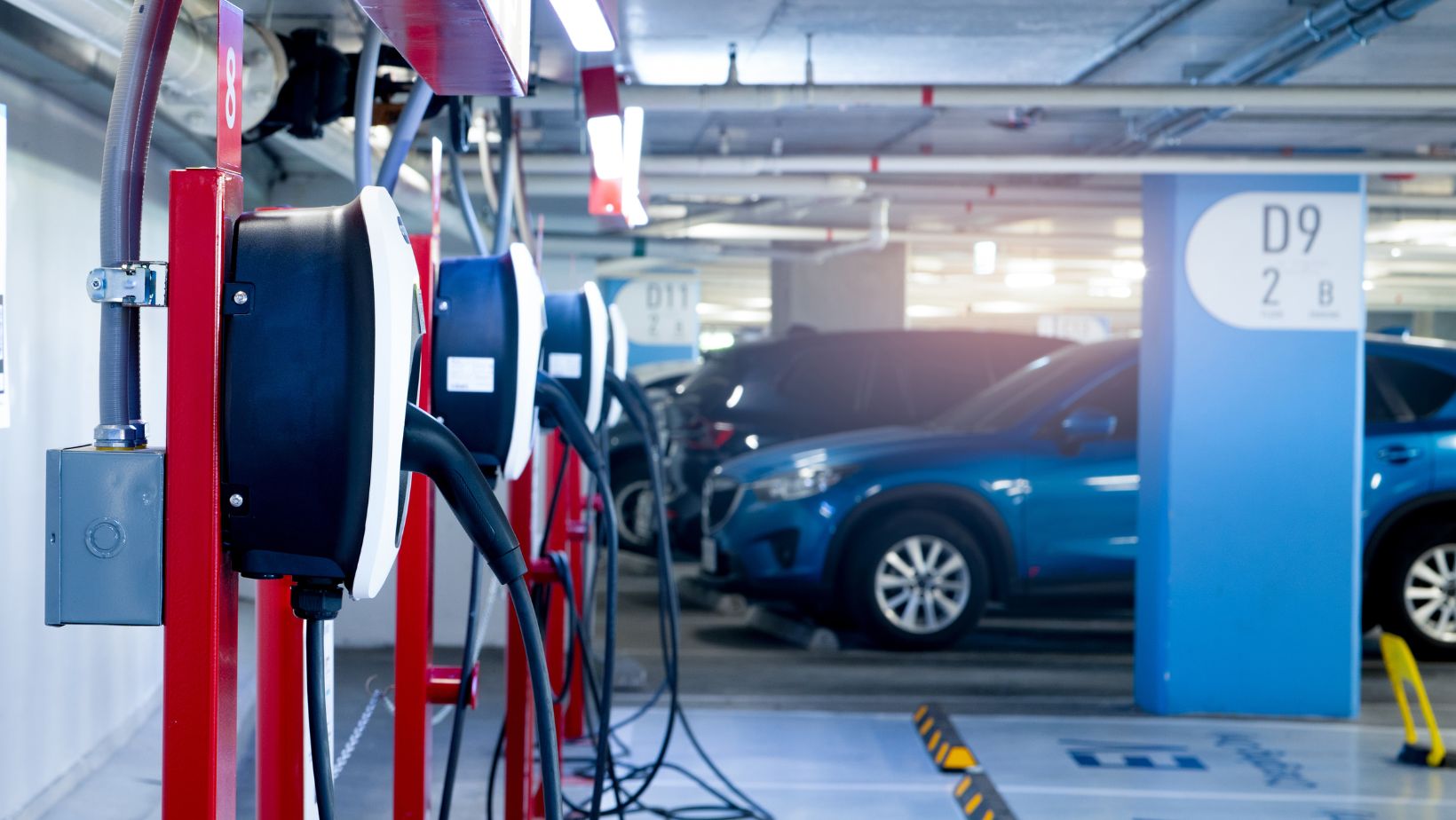Imagine your business as a tree in a bustling city; installing EV charging stations is like planting deep roots that not only anchor you but also provide shade and oxygen to the surroundings. By integrating EV chargers, you’re not just ticking a sustainability box; you’re attracting eco-conscious customers and employees who value your commitment to green practices. This strategic move enhances your public image and aligns you with global trends, but how do you choose the right solution and navigate the installation process? Let’s explore the steps to ensure your investment is both impactful and future-proof.
Benefits of EV Charging Stations
Installing EV charging stations at your business can significantly enhance your company’s sustainability profile while attracting eco-conscious customers and employees. Incorporating EV charging stations aligns with global sustainability trends, signaling your commitment to reducing carbon footprints. This strategic move not only improves public perception but also boosts your competitive edge.
From an employee benefits perspective, offering EV charging facilities can be a game-changer. Studies show that 80% of employees value sustainability initiatives at their workplace. By providing these stations, you’re not just promoting green practices but also increasing employee satisfaction and retention rates. Employees with electric vehicles will appreciate the convenience, potentially leading to higher productivity and morale.
Customer engagement also sees a substantial boost when EV charging stations are available. Eco-conscious consumers are more likely to frequent businesses that support their values. Data indicates that 55% of consumers are willing to pay more for products from sustainable companies. By installing EV chargers, you create touchpoints for deeper customer interactions and loyalty. This can translate into increased foot traffic and sales, making it a strategic investment with tangible returns.
In essence, EV charging station for business aren’t just an amenity but a strategic asset that enhances both employee and customer engagement.
Choosing the Right Charging Solution
Selecting the right EV charging solution for your business involves evaluating several key factors, including the types of chargers available, installation costs, and projected usage rates.

You’ll first want to consider the charging speed. Level 2 chargers, ideal for employee and customer use, typically offer a full charge in 4-8 hours. If your business requires faster turnover, Level 3 chargers, or DC fast chargers, can charge an EV up to 80% in just 30 minutes, though they come with higher costs.
Next, think about the user interface. A straightforward, intuitive user interface can significantly improve user satisfaction and minimize the need for customer support. Look for solutions that offer seamless payment options, real-time availability updates, and easy-to-read displays.
Analyze your projected usage rates to determine the number of charging stations required. High-traffic businesses may need multiple units, while smaller operations might suffice with one or two.
Additionally, don’t overlook the importance of data analytics. Many advanced charging stations come equipped with software that provides usage statistics and insights, helping you optimize your charging infrastructure over time.
Installation Considerations
When planning the installation of EV charging stations, you should first evaluate the electrical capacity of your site to ensure it can support the additional load. Begin by conducting a thorough electrical audit to identify any necessary upgrades. This step is crucial for avoiding unexpected outages and ensuring safe, efficient operations.
Next, focus on site selection. Strategically choosing the location of your charging stations can significantly impact user convenience and overall utilization rates. Prioritize areas with high visibility and easy access. If your business has parking lots, consider placing chargers near entrances to attract more users.
Data shows that proximity to existing electrical infrastructure can reduce installation costs by up to 20%. Therefore, choose sites where minimal trenching and cabling are required. Additionally, consider future scalability. Plan for potential expansion by leaving room for additional units and ensuring your electrical system can handle increased demand without substantial upgrades.
Collaborate with experienced contractors to develop a detailed installation plan. They can offer insights into best practices and help you navigate any regulatory requirements. By strategically planning your EV charging station installation, you can achieve your sustainability goals while optimizing both costs and operational efficiency.
Government Incentives and Grants
Securing government incentives and grants can significantly offset the costs of installing EV charging stations and enhance your business’s return on investment. By leveraging federal rebates and tax credits, you can make the transition to electric vehicle infrastructure more financially feasible. Federal rebates often cover a substantial portion of the installation costs, sometimes up to 30%, which can translate to thousands of dollars in savings.
Tax credits are another powerful tool. The federal government offers tax incentives that can reduce your business’s tax liability by a significant margin. These credits directly lower the amount you owe in taxes, making the investment in EV charging stations even more attractive.
To maximize these benefits, you’ll need to conduct thorough research and strategic planning. Identify the specific federal rebates and tax credits available to your business. Applying for these incentives requires meticulous documentation and adherence to deadlines, so allocate resources for this administrative task.

Additionally, consider consulting with a financial advisor specializing in green initiatives. They can provide insights into optimizing your financial strategy to capitalize on these incentives fully.
Future-Proofing Your Investment
Future-proofing your investment in EV charging stations involves adopting scalable technology and anticipating future market demands to ensure long-term viability and profitability. Start by analyzing current market trends. The EV market is growing at an annual rate of 21.7%, and the number of electric vehicles on the road is expected to reach 145 million by 2030. By understanding these trends, you can better predict the demand for charging infrastructure.
Next, focus on technological advancements. Opt for charging stations that support over-the-air updates and can be upgraded as new technologies emerge. This ensures your infrastructure stays relevant as battery technologies and charging speeds improve. For instance, newer charging stations now offer ultra-fast charging capabilities, reducing the time required to charge an EV. Adopting such features can increase your station’s attractiveness to users.
Incorporate scalable solutions. Design your charging stations to easily accommodate more chargers as demand grows. This strategic planning minimizes future disruptions and maximizes return on investment.
Lastly, integrate smart charging solutions that optimize energy use and reduce operational costs. By leveraging data-driven insights, you can make informed decisions that align with your sustainability goals while keeping pace with market trends and technological advancements.
Conclusion
By installing EV charging stations, you’re not just meeting sustainability goals—you’re strategically positioning your business for future success. Coincidentally, as the demand for eco-friendly solutions rises, you’ll attract more eco-conscious customers and employees.
With government incentives and a keen eye on future-proofing, you’re enhancing your competitive edge. It’s not just about sustainability; it’s about making a smart, data-driven investment that aligns with global trends and ensures long-term growth for your business.

